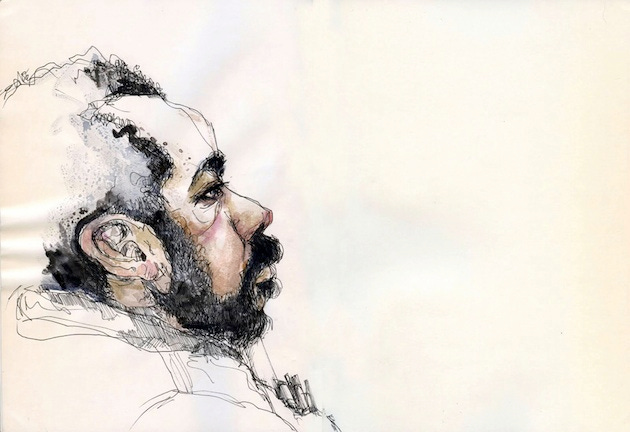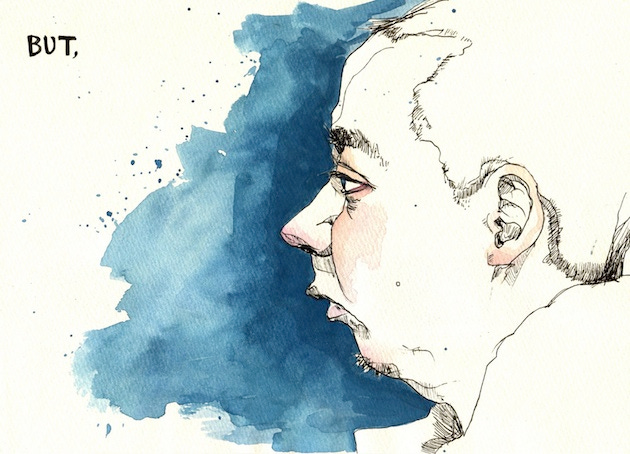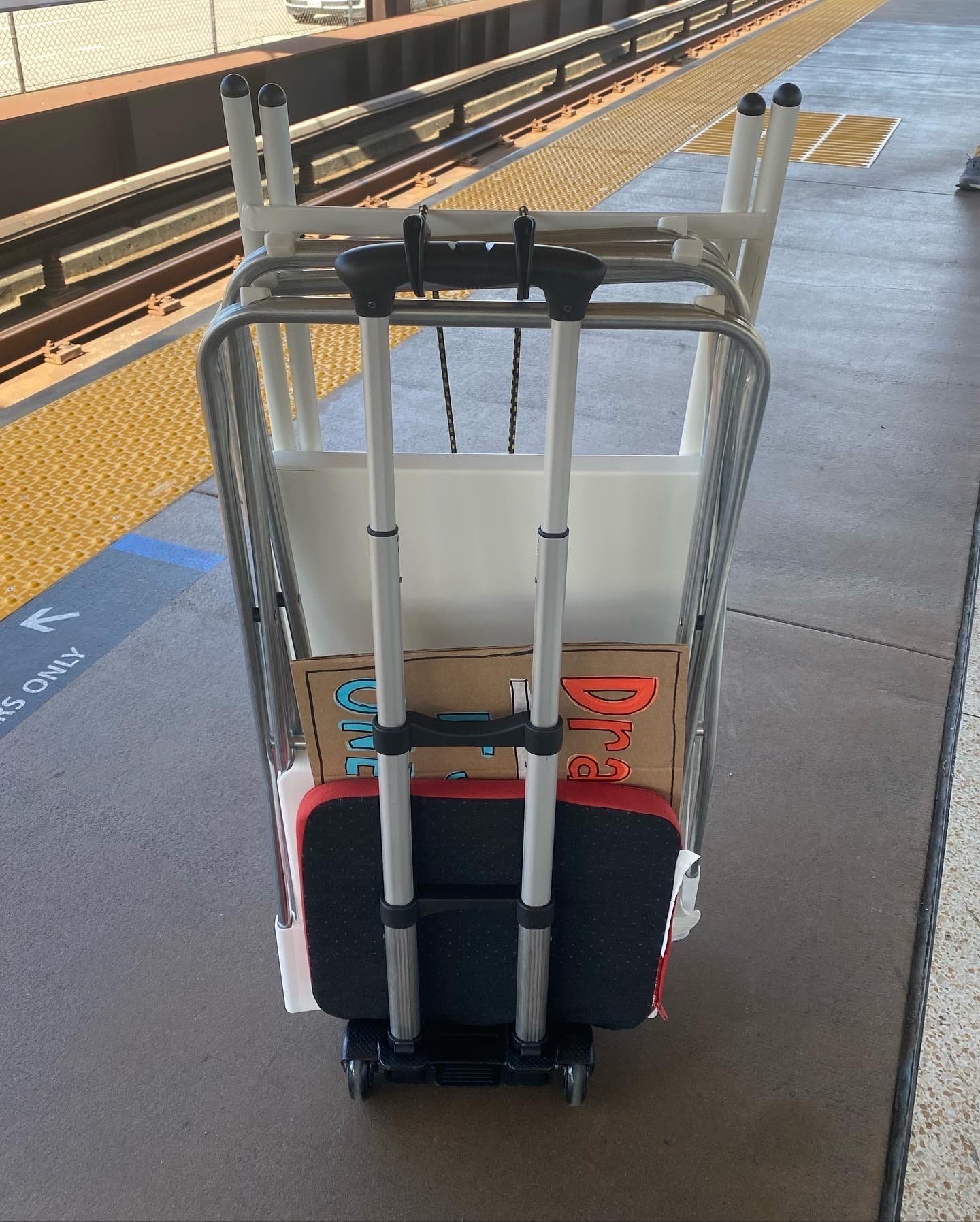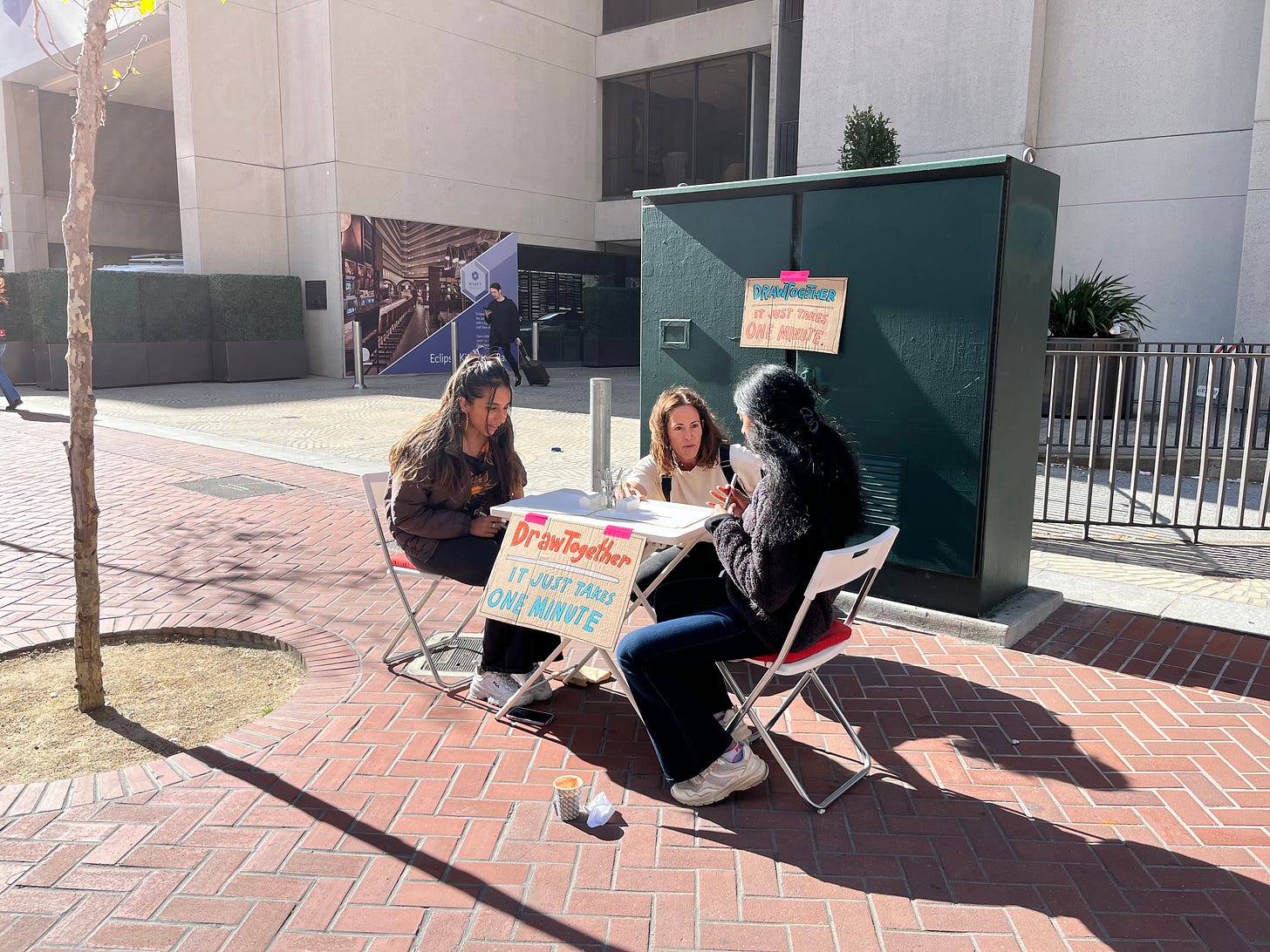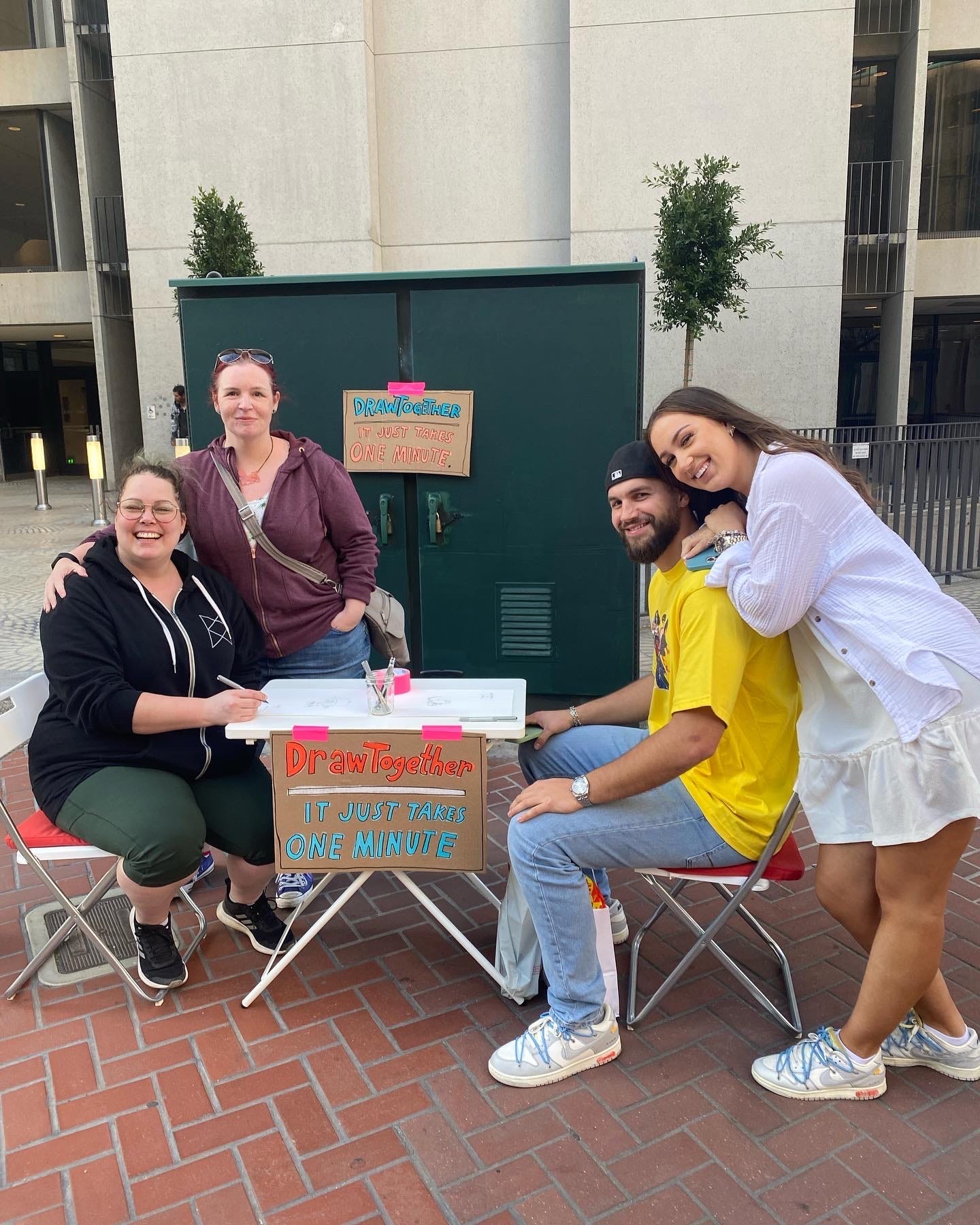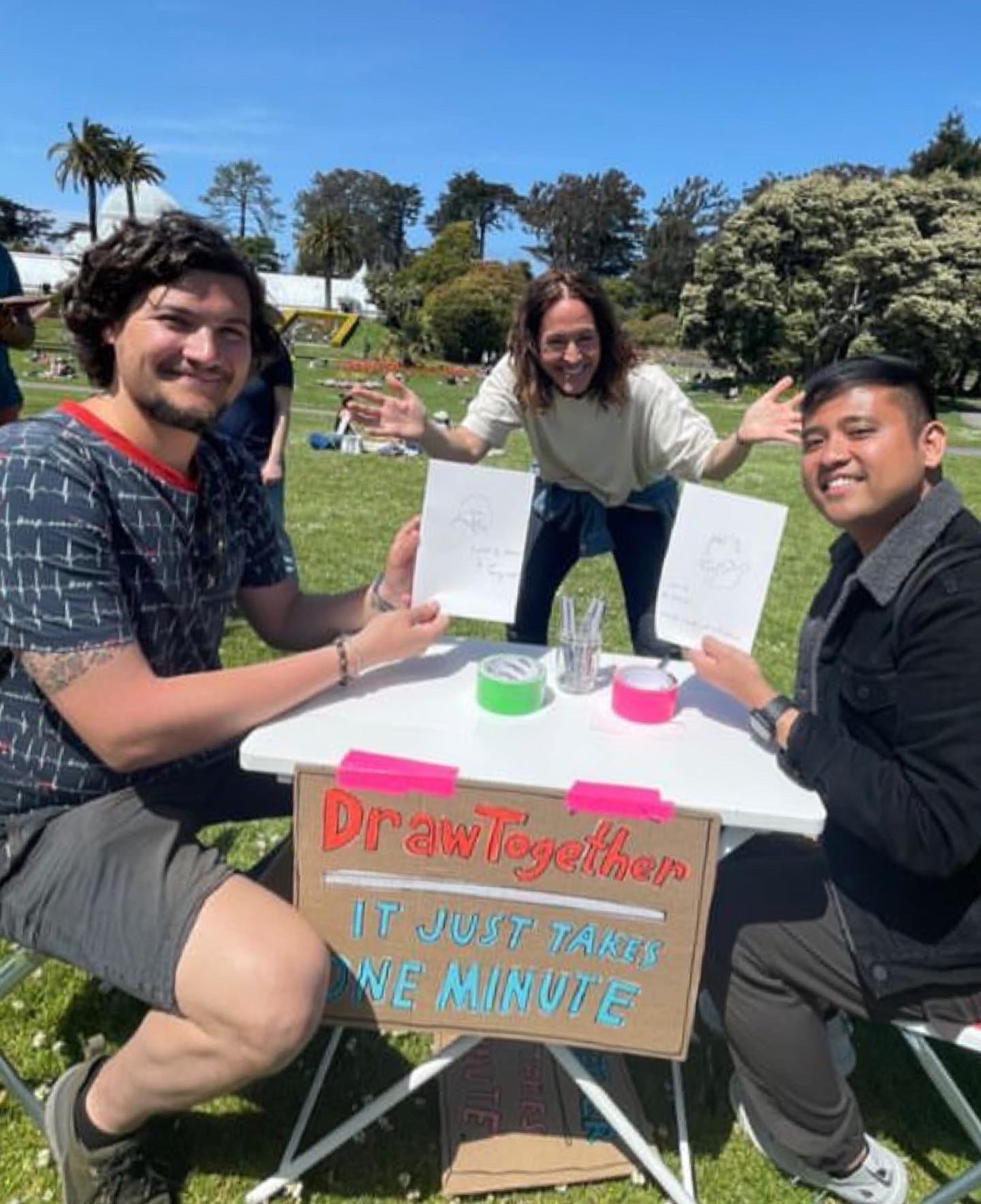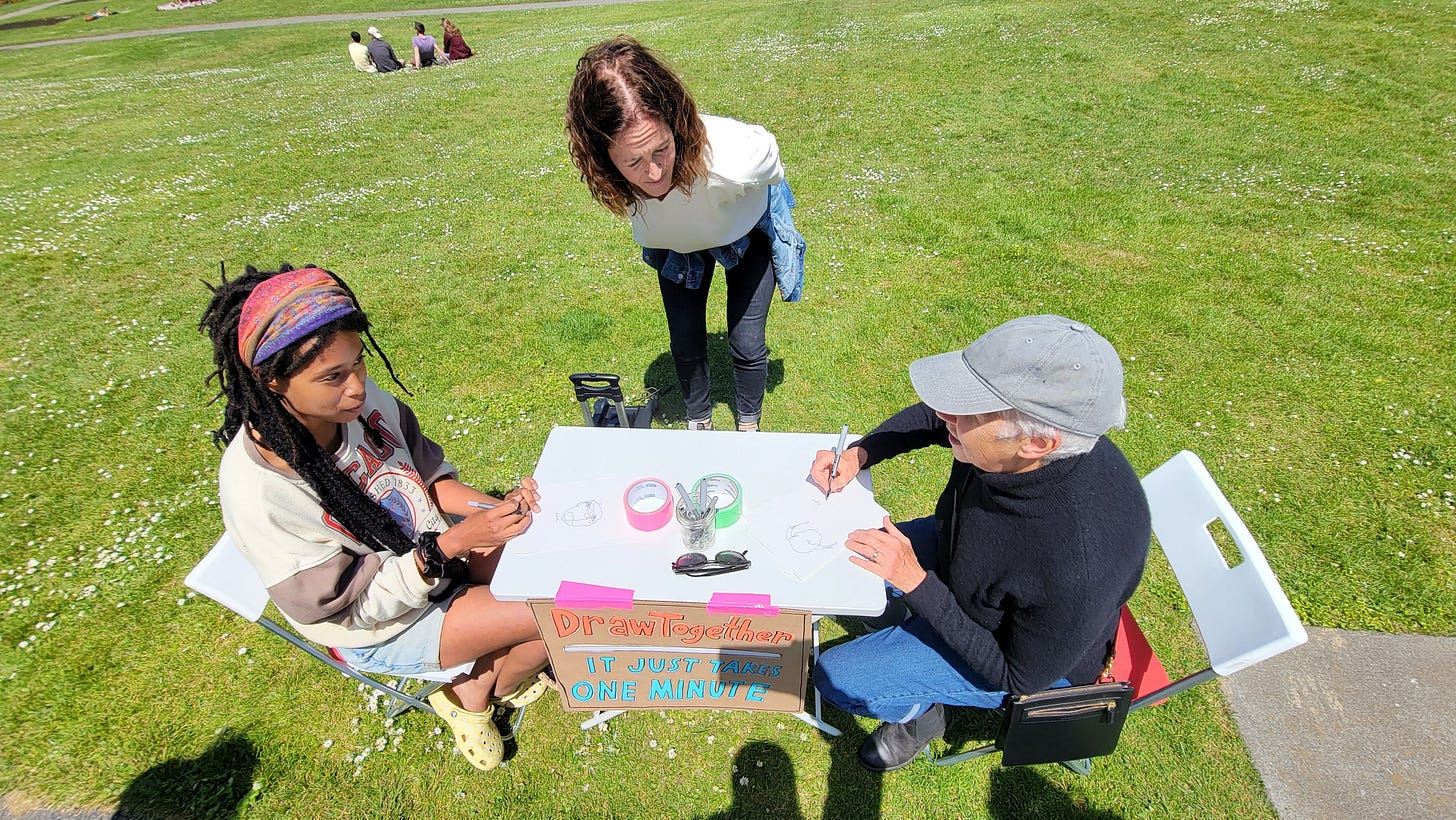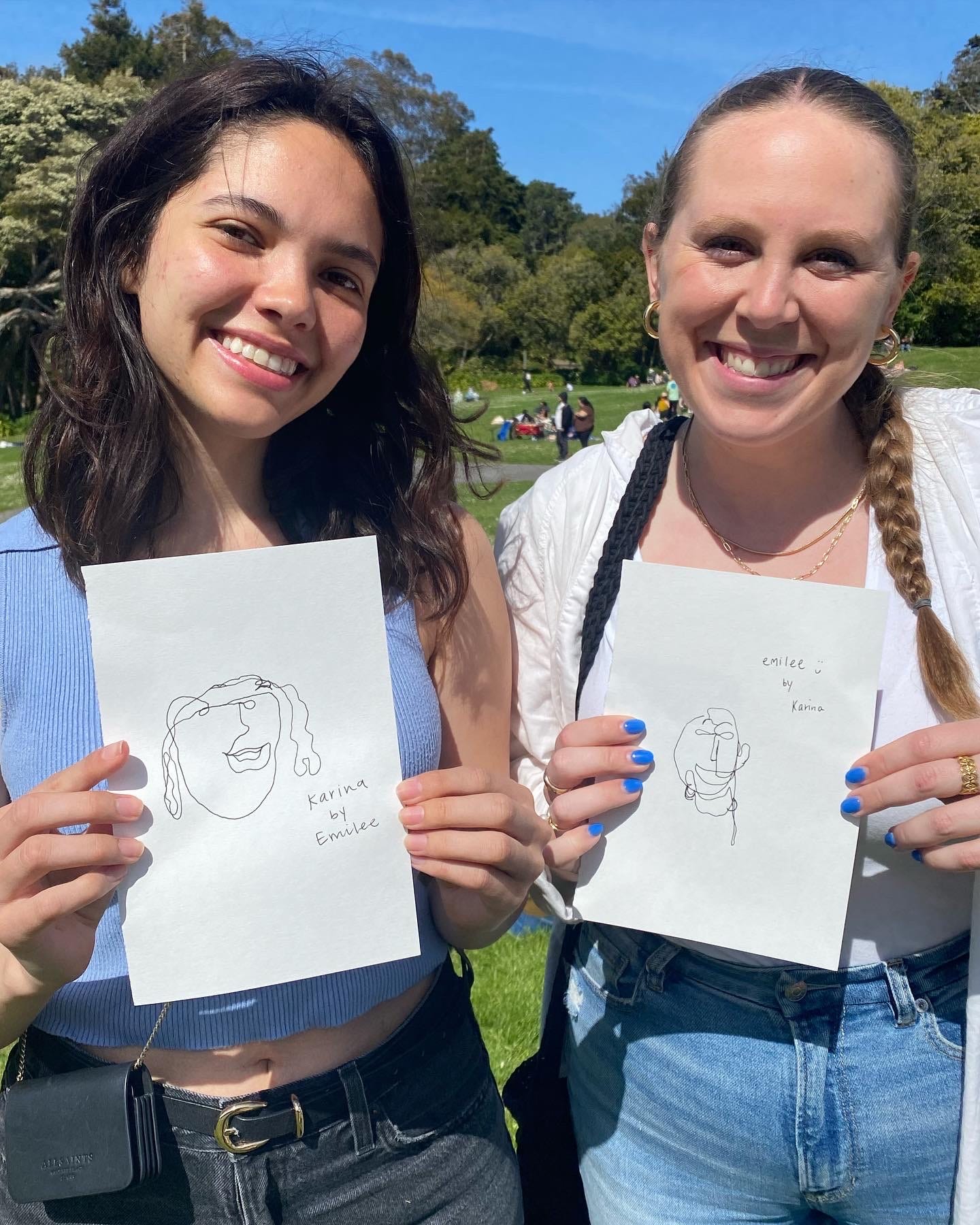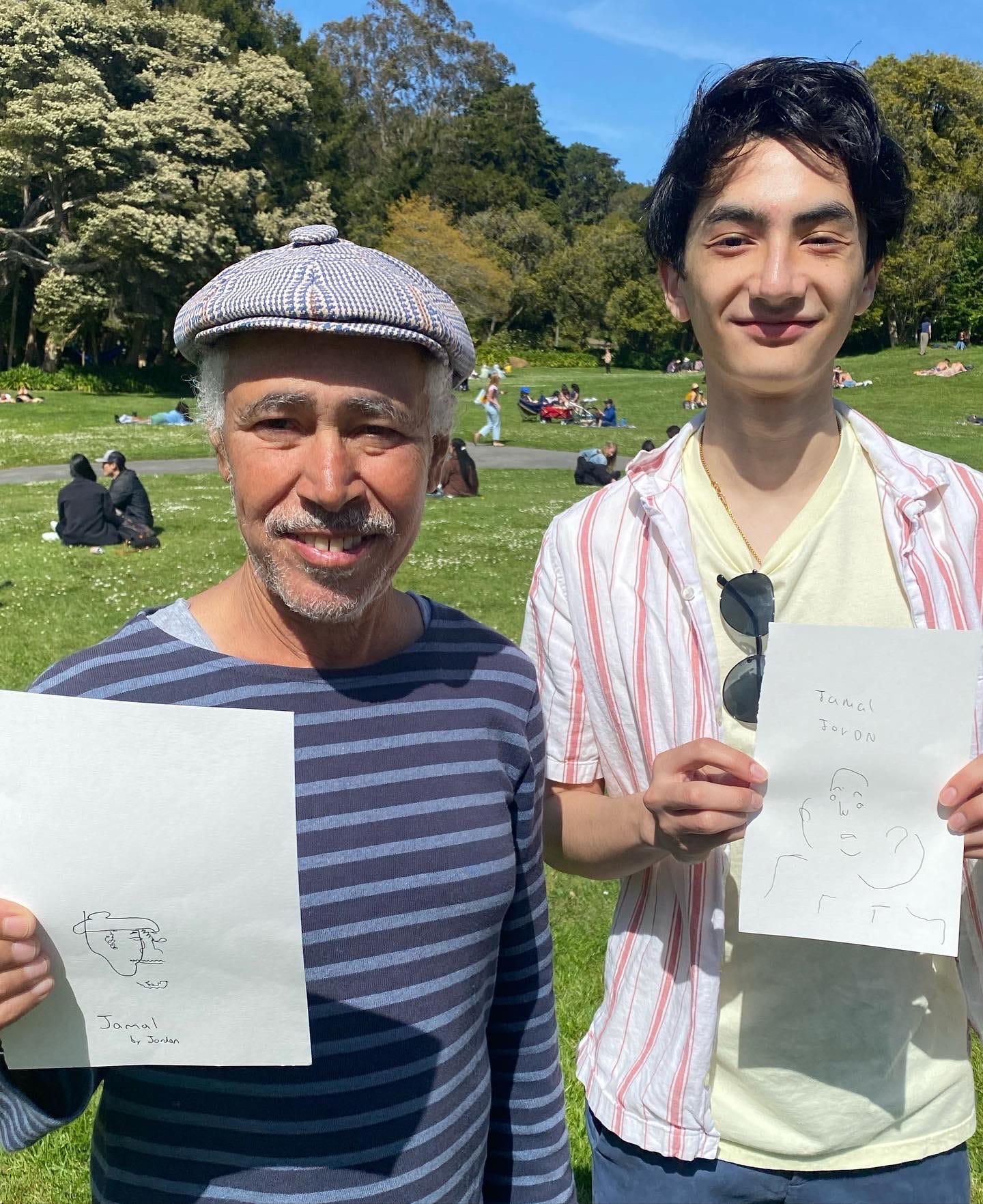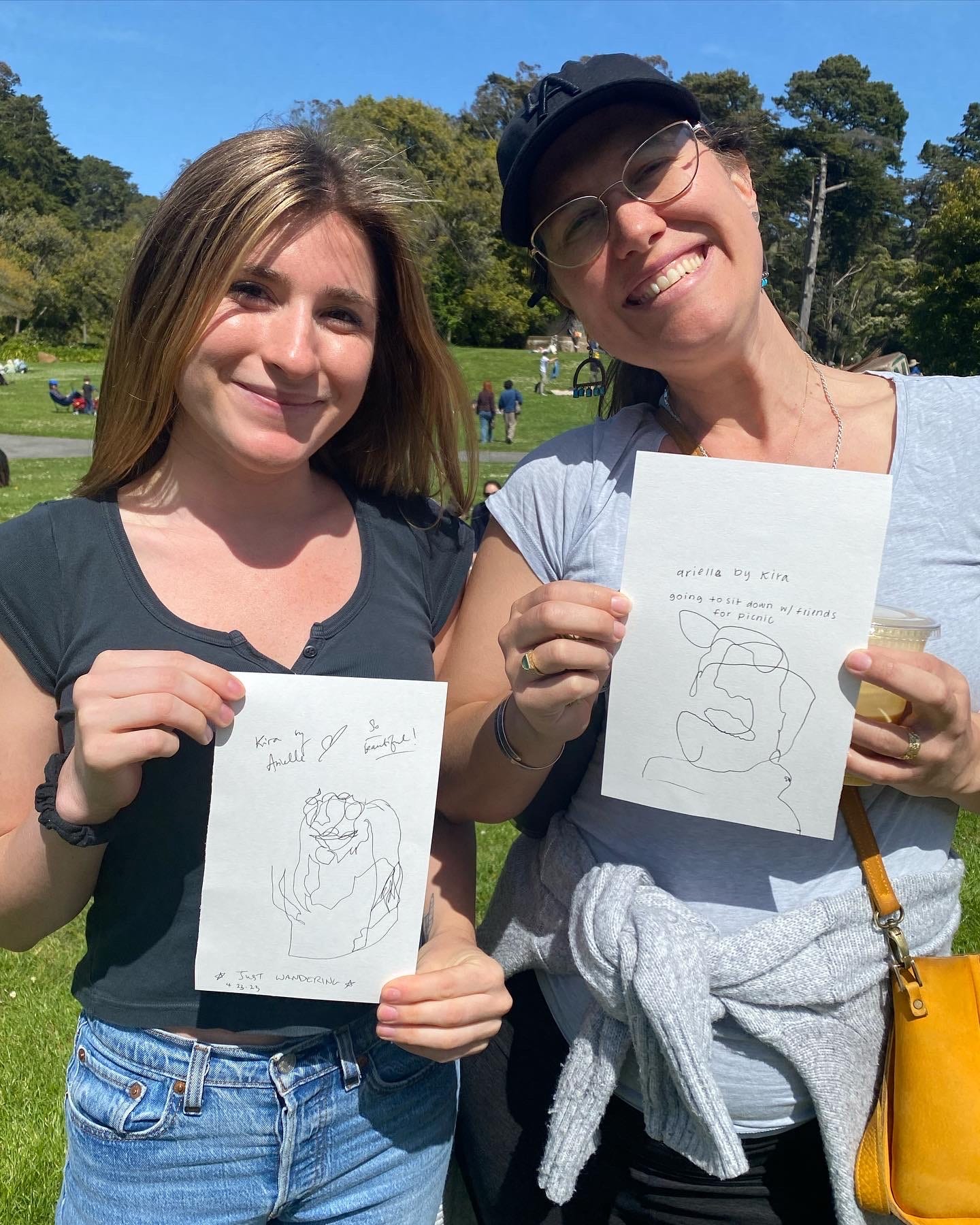The Most Important Response to Our Work is Our Own
Or, Stay Calm and Keep Drawing, Looking and Loving
Helllooooo DT GUT peeps.
Last week was a delight. Attention Club Members, I love what you did with your drawn stories last week inspired by Sister Corita’s finders, and Laurel Braitman’s writing prompt. GUT member MELISSA, you are this weeks 100% random winner. Email me at wendy@wendymacnaughton.com for a signed copy of Laurel’s book, your Attention Club membership card, and the awesome Blackwing x Corita art supplies. If you aren’t a supporting GUT member, I don’t know what to to tell you. (Scholarships always available. Supporters make that possible. Thanks.)
Onwards! So… Last week I did a little public art experiment.
It was the most fun I’ve had in ages, and I thought I’d share a little of what I learned in the process: what led up to it, what I learned while doing it - especially in the aftermath.
If you’re familiar with my work or have been drawing with me for a while, you’ve heard me talk about Blind Contour Drawings. (We made a DT podcast episode about them.)
That’s when we draw without looking down at the page. It’s the first thing you learn in art school because it helps develop up hand-eye connection, gets our minds off the end result, and starts teaching our brains slow down, focus and really see. Not to oversell it, but I think it’s the worlds best drawing exercise. Also because it’s FUN.
I’m biased because it’s how - and why - I draw. I’d stopped drawing after art school - took a nearly 10 year hiatus - and retuned to it one day on the subway, on my way to work. That’s where I re-taught myself to draw.
Every day, twice a day, I’d draw people as they traveled between their home and work worlds. I usually drew standing up - the train jostled, people would sometimes notice me, and often they’d jump off mid-drawing - so I had to learn to draw FAST.
Also, the more my head bobbed as I looked between my subject and the page, the more people noticed me. I needed to be stealth. So I taught myself to draw without looking down much. And when they did notice me, I learned how to engage in a friendly, disarming way. I didn’t know it at the time, but I was developing the foundation for my drawn journalism practice.
Flash forward to right before the pandemic. I’d been talking with the EIC of California Sunday Magazine (RIP) Doug McGray about a big drawn project on SF’s housing crisis and how fractured the city is. I’d been teaching Blind Contour Drawings in workshops and knew how powerful the experience could be at getting people to look at one another. So I pitched him an idea: I wanted to set up drawing stations all over SF and invite strangers to draw each other without looking down for 60 seconds. Then we’d take those drawings and install them in bus shelters and other public spaces throughout the city. Host a city-wide public show of the city seeing itself.
Then the pandemic happened. Caroline and I started DrawTogether. California Sunday folded. And I shelved the idea.
Then, about a year and a half ago, I pitched it to a SF Museum. There was excitement from high up. The meeting went well, “Can’t wait to talk more! We’ll call you!” etc etc. I never heard back.
I know we’ve all experience this. The Ghosting. It’s the worst. It almost never has ANYTHING to do with us, but boy is it hard not to take personally. The institution is all-knowing, isn't it? And if they won’t give me approval, the problem must be me, right? Blargh.
So again, I shelved the idea. Until last week.
If you read last week’s GUT dispatch you know I made a big mistake and it kept me from going to TED, and that I’d pinned so many DrawTogether hopes and expectations to the conference. Being grounded in the Bay, I found myself with two things:
1. Total exhaustion/fury over angling for institutional approval
2. Free time
Turns out that’s a magic combination. It gave me steam.
First thing on Friday I drove to IKEA and bought two folding chairs and a table. I cut up some cardboard and painted: “DrawTogether: It just takes 1 minute.” I strapped it all to a rolling luggage card, took it to the subway, took the subway to Downtown SF, got off at the first stop, and rolled my cart to the downtown city side walk.
I was terrified. Suddenly it occurred to me I looked like a religious person with one of those tract stands. What the hell was I doing? Clearly this was a terrible idea and I was totally insane. And I was about to roll my cart back down to BART when out of the blue my friend Laura (who I haven’t seen in years, btw) walked up. She was leaving work and spotted me and came over. I told her how scared I was. She scoffed, “YOU? Scared? You got this! I’ll help you set up.”1
It worked.
Turns out I barely had to wrangle participants. People wanted to do it. Some stopped to draw and others gathered to watch. Students, workers, tourists, professionals, kids, older folks, chefs, therapists, teachers, and city workers - all strangers to one another - stopped, sat across from one another, and drew each other for 60 seconds without looking down.
After a couple hours I ran out of paper.
On Sunday, I took the set up to Golden Gate Park: a different part of the city with a different intersection of people. After another timid start on my part, there was never a moment when the drawing chairs were empty. When people were done drawing each other, these former strangers high-fived, kept talking, even exchanged contact info to keep in touch.
San Francisco is fractured these days. There’s so much wealth and poverty, so much despair and hopelessness and exhaustion and shame. People avoid looking at each other. The more people avoid looking, the less we see each other, the more we duhumanize others, and the more inhumane we ourselves become. In this sense, San Francisco is a microcosm of America. We’ve replaced people with schema. Portraits with caricatures. We don’t see each other anymore.
I have a script I say before, during and after people draw. I’ll spare you the before and during, but I think the after part is relevant to us here at the Grown-Ups Table:
“The drawing is wonderful, isn’t it? I mean, it’s terrible, but it’s wonderful. Why? Because this isn’t just a silly drawing of your new friend here. It is a by-product of something way bigger - you both just looked at each other non-stop for 60 seconds. When do we ever do that? NEVER. These silly drawings are evidence of you both slowing down and paying attention to each other.
So often we avoid looking at each other… But if we can all slow down and really SEE each other - just like you two just did - we can change this world from the inside out.
You’re welcome to keep your drawings.”
What’s next
I still want to do The Big Draw, but for now I’m going to keep it a weird little art project. The last thing I need is to turn this thing into a thing that requires me to go back and knock on institutional doors. Blargh.
I still like the idea of other people hosting these drawings sessions, so I’m continuing to gather names of folks interested in hosting for the future (if you’re interested, email wendy@wendymacnaughton.com with your name, location, and any relevant details.) Maybe someday I’ll set up stations around SF, or send out instructions with a script and a hashtag and we can draw together around the world.
But for now, it’s just me and a table and some cardboard signs when I feel like it.
I’m keeping this one fun.
Moral of the Story (at least for me…)
I’m reminding myself of this. Maybe you need to hear it, too:
There are moments when we all look outside of ourselves for approval of our creative work. It makes sense. We make art to express and connect. Of course we want the smiles! That’s hard baked into being human.
When it becomes dangerous is when we start making decisions about what we do or do not do based on other people’s responses. When we use other people as an excuse not to make things. Or when we begin to value other people’s response over our own creative impulse.
Nobody sees the world like you see it. Nobody else notices what you notice and makes the same marvelous meaning of it that you do. Nobody else imagines and dreams and takes the time to make that all into something like you do. That is what makes you an artist. That’s your gift to the world. And more important, it’s your gift to yourself.
The most important response to the work is our own.
Take a note from Blind Contours. The joy is in the making.
Just keep doing what you do.





